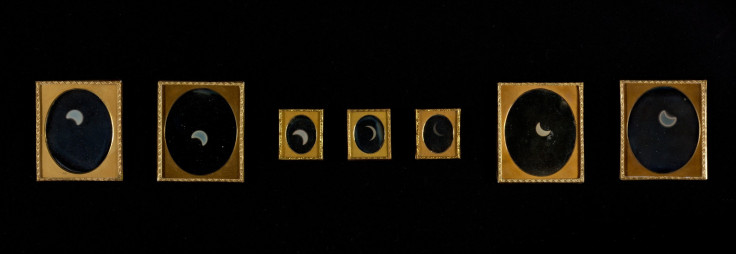Historic Photos Of The Sun: Oldest Images Of Earth’s Shining Star

The sun is everything — it breathes life into our planet by shining its light down upon us. But understanding the sun has taken thousands of years, in part because it can be difficult to observe a giant ball of fire in the sky.
Technology is making it easier, with spacecraft and advanced photography equipment bringing us closer to the sun than ever before. But we had to start somewhere. The oldest surviving photos of the sun are all from the mid-19th century.
The original is the best
It’s difficult to take a detailed photo of the sun these days — smartphone cameras aren’t going to get very close or clear images and, without the proper filter equipment, the intense light from our star could destroy an expensive DSLR. But photography pioneers were able to take an image of the sun almost two decades before the American Civil War broke out.
On April 2, 1845, French physicists Louis Fizeau and Léon Foucault took this daguerrotype photograph of the sun, the oldest one that is still around today, according to NASA. The image has so much detail that you can see sunspots, the small dark pockets on the sun’s surface where the temperature is lower due to the movements of its magnetic field.
Going dark

It was in modern-day Russia that the first photo of a solar eclipse was taken, six years after that groundbreaking picture. Daguerrotypist Johann Julius Friedrich Berkowski snapped the picture during the total eclipse on July 28, 1851, for the Royal Prussian Observatory in what was then Königsberg, now Kaliningrad, on the Baltic coast. NASA says the observatory hired Berkowski, a local, for the event because of his skill.
This photo was taken at totality, the time when the moon completely covers the sun during an eclipse. During totality, the edges of the sun’s corona, the uppermost part of its atmosphere, is still visible reaching out from the orb.
Coming to America

Three years later, the earliest surviving image of a solar eclipse would be taken in the United States. German-born brothers and Philadelphia residents William and Frederick Langenheim, former journalists, took a sequence of photos during the astronomical event, according to the Metropolitan Museum of Art in New York City, where seven of the eight photos survive. The solar eclipse of May 26, 1854, ran from Oregon to Maine.
According to the museum, seven other photographers were documenting the eclipse as well, but only the seven sequential photos of the Langenheim brothers are still around.
Although the moon covers the sun from right to left during an eclipse in the northern hemisphere, the uncorrected daguerrotype images show a mirror of the event — the moon eats away at the sun from left to right.
“It is noteworthy that these daguerreotypes are quite small, three exceptionally so,” the museum explains. “In order to produce any kind of image at all, the Langenheims were forced to use the smallest cameras available, since smaller cameras require proportionally less light and there was virtually no available light when the disk of the new moon eclipsed the largest part of the sun. The missing eighth image was probably made on the smaller plate size and showed nothing at all-a total eclipse.”
© Copyright IBTimes 2025. All rights reserved.



















